A step drill bit is a unique type of drill bit that creates holes in a variety of different sizes. This bit has multiple steps, or levels, that allow you to choose the size of hole that you want to drill. In this guide, we will answer some common questions about using it. We’ll also provide some tips.
What is a Step Drill Bit?
This is a device that is used to create holes in metal and plastic. It is called a “step” drill bit because it has a series of stepped cutting edges that allow it to create precise holes in a variety of thicknesses.
They are also sometimes called “cone” or “taper” drill bits and are available in a variety of sizes, but most have a diameter range of between 0.125 inches (0.32 cm) and 0.75 inches (19 mm).
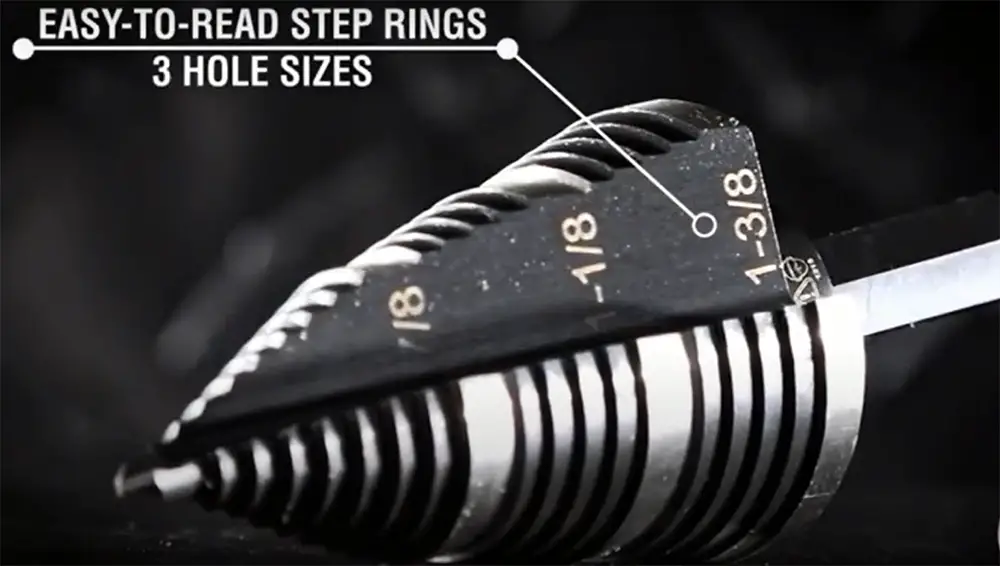
Most of them are made from high-speed steel, which is a type of tool steel that can be hardened to withstand high temperatures. Cobalt step drill bits are also available and these are even more heat resistant than HSS bits, but they are also more expensive. [1]
What do you need before drilling a hole?
The first thing you need to do is figure out what size you need. If you’re not sure, go for a bigger drill bit. Once you know the size of the hole you need, gather your materials. You’ll need a power drill, a step drill bit, and a piece of scrap wood. Drill bits come in standard sizes, so be sure to get the right one for your project.
Clamp the Object
The first step is to clamp the object you’re going to be drilling into. This will keep it steady while you work and prevent it from moving around. If the object is small, you can hold it in place with your hand. Otherwise, use a vise or clamp to keep it secure.
Make a Center Mark
Then you’ll need to make a center mark on the material you’re drilling. This will be the starting point for your hole. You can use a pencil or a marker to make the mark. The important thing is that the mark is visible and won’t rub off easily.
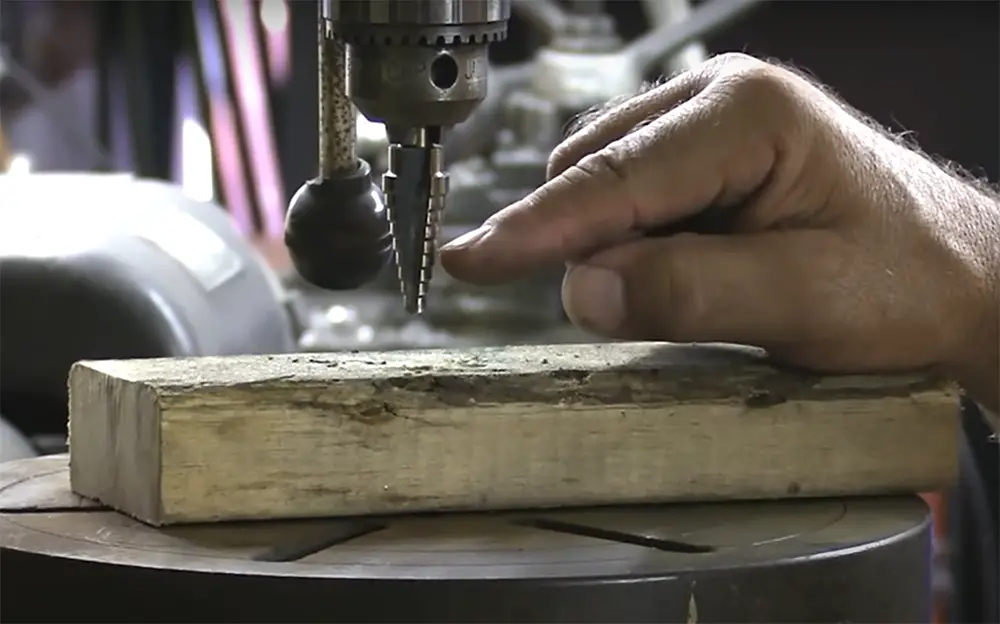
Next, you’ll need to find the center of your drill bit. There should be a small notch near the tip of the bit. This is called the pilot point and it’s used to help keep the bit centered while you’re drilling. Line up the pilot point with your center mark and you’re ready to start drilling.
Drill a Pilot Hole (for larger step drills)
If you’re using a device, it’s a good idea to start with a smaller pilot hole for keeping the bit from walking as you start drilling. After you’ve drilled the pilot hole, move on to the larger drill bit and keep on drilling to the required diameter.
Steps of Drilling the Hole
For best results, use a slow and steady speed while drilling. You’ll also want to apply moderate pressure to the drill bit. If you’re going too fast, the bit will heat up and could damage the material. If you’re applying too much pressure, the bit could break or come loose from the drill.
As you drill, keep an eye on the chips coming out of the hole. They should be long and curl around the edges. If they’re short and broken, that means you’re applied too much pressure. Ease up on the pressure and continue drilling until you reach the target depth.
Once you’ve reached it, stop drilling. If you’re drilling through metal, there’s a chance the material could be hot. Use a pair of gloves or a rag to protect your hands as you remove the device.
Clean Up
Now it’s time to clean up the edges. You can use a deburring tool or a file to eliminate any sharp edges for preventing injury and make it easier to insert whatever you’re putting into the hole.
You can also use a countersink bit to create a beveled edge around the hole. This is often used for screws so that the head of the screw sits flush with the surface.
What are Step Drill Bits Used for?
Step drill bits are mostly used for boring holes in metal. They can also be used on wood and plastic, but they work best on metal.
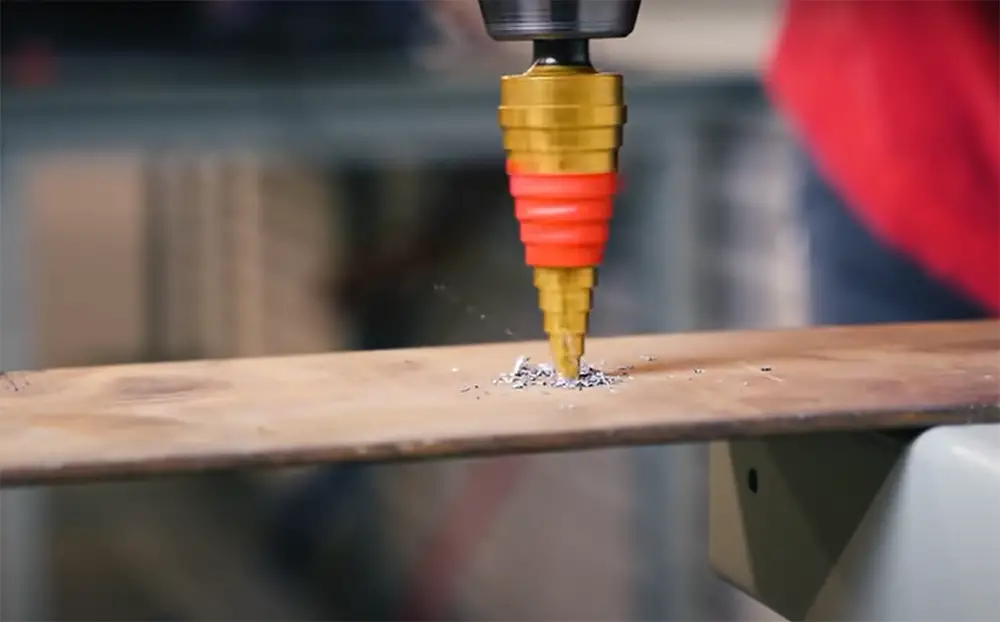
Most of them have two cutting edges, which helps to make them more durable. The two cutting edges also help to create cleaner holes. They are also less likely to walk or wander when you’re starting a hole, which is another advantage.
Drilling Sheet Metals
They are good for creating pilot holes. These are smaller holes that help to guide the way for larger holes. Drill bits can sometimes slip when they’re first starting to bore into a material, but pilot holes prevent this from happening.
Drilling Carbon Fiber
Carbon fiber is a material that is becoming increasingly popular. It is strong and lightweight, which makes it ideal for a variety of applications. When drilling carbon fiber, it is important to use a tool that has a small diameter for preventing it from slipping and creating a cleaner hole.
Drilling Plastics
Plastics can be tricky to drill. If the bit is too large, it will melt the plastic and cause it to stick to the bit. If the bit is too small, it will just spin in the plastic without making a hole. The key is to use a detail that is slightly smaller than the final size you want.
Start by drilling a pilot hole in the center of where you want your final hole. Then, slowly increase the size of the hole by stepping up to the next size until you reach the target size.
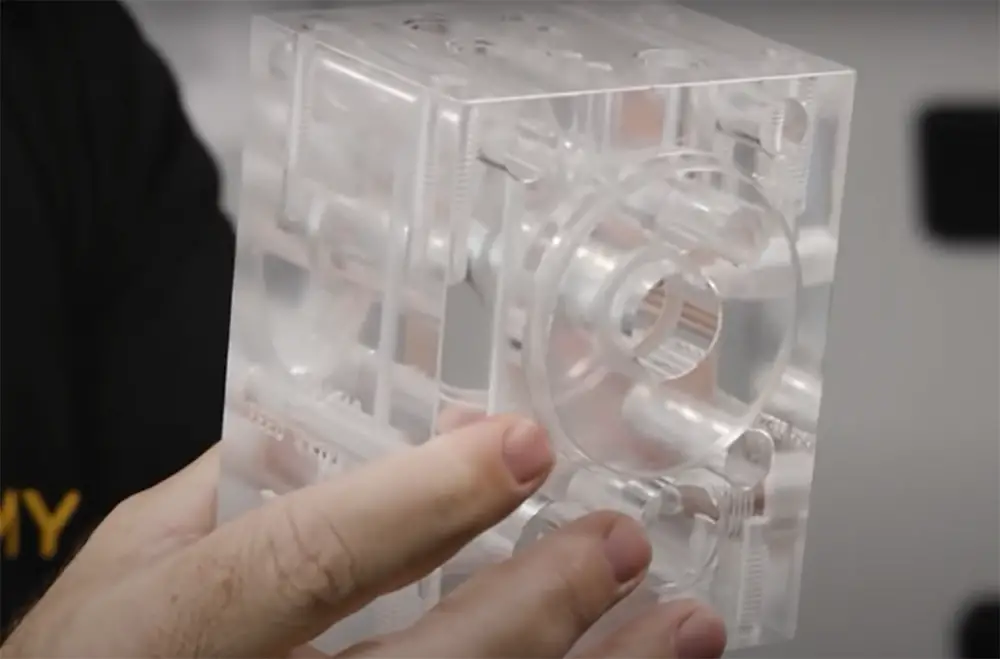
If you’re working with thin plastics, you may need to use a backing board to prevent tearing. Place your piece of plastic on top of a scrap piece of wood, and then drill through both pieces at the same time.
You can also use it to make round holes in other materials like aluminum or sheet metal. Just be sure to use lubricant (like WD-40) on the bit to prevent wear and tear.
Enlarging Holes
Most homeowners will need to enlarge a hole at some point. Whether you’re hanging a new piece of artwork or installing a new doorknob, you’ll need to make the hole bigger.
To use it, start by chucking it into your drill. Position it over the area you want to enlarge. Slowly start drilling, applying light pressure. As the tool starts to cut through the material, increase the speed slightly.
Keep drilling until you reach the target size. Then, unplug your drill. Use a file or sandpaper to smooth any rough edges.
Deburring Holes
If you’re using a step drill bit for making clean, precise holes in metal, you’ll want to deburr the holes afterwards. This simply means removing sharp edges so that it won’t tear up whatever material you’re inserting into it later. The best way to deburr a hole is with a countersink bit – just set the depth of the countersink bit so that it only barely grazes the surface of the metal, and run it around the inside and outside edges of the hole. You can also use a file or sandpaper to deburr by hand, but this will take longer and may not be as precise.
Knock out Holes
A step drill bit is a very versatile and handy drill bits you can have in your arsenal.
First, let’s start with the basics. It is a type of drill bit that has a stepped design. The idea behind this design is that it allows the tool to cut through material more quickly and easily. The steps on the drill bit act as cutting edges, which makes them ideal for drilling through tougher materials. [3]
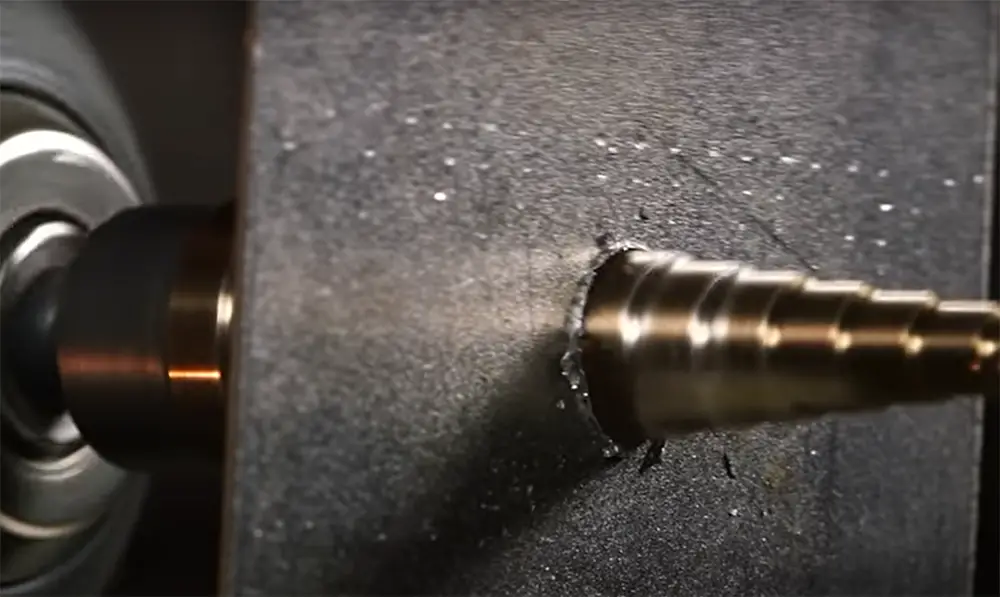
One of the great things is that they can be used in a variety of different ways. You may use them to bore through metal, wood, plastic for that matter. You can also use them to create pilot holes for nails. Additionally, they are perfect for making clean and precise holes in a variety of sizes.
How to Use a Step Drill Bit?
There are many diverse types of drill bits, each designed for a specific type of drilling. If you’re not sure which type to use, it’s always best to consult with a professional. However, if you’re looking for a versatile option that can handle diverse materials, a step drill bit is a good choice.
Take Safety Precautions
Before using any type, it’s important to take some safety precautions. First, make sure that you’re wearing the proper safety gear, including eye protection and earplugs. Second, read the instructions carefully to avoid damaging the material or injuring yourself. If you’re still not sure about using it, there are plenty of instructional videos and articles available online.
Select a Step Drill Bit
If you’re not sure which size to select, it’s usually better to err on the side of caution and go with a larger one. You may always reduce the size of the hole if necessary, but you can’t increase it. When selecting, you also need to consider the material you’ll be drilling into. Some materials, such as metal, require special considerations.
Use Center Punch
If you’re drilling a large hole, it’s important to use a center punch to create a starting point. It creates an indentation in the material. To use it, simply place it on the surface of the material and strike it with a hammer. This will create an indentation for the drill bit to start in.
Drill
Once you’ve selected the right drill bit and made a starting point, it’s time to start drilling. Begin by placing the tip of the drill bit on the surface of the material. Apply pressure to the drill and slowly begin to turn it in a clockwise direction. As you’re drilling, be sure to keep the drill bit level so that it doesn’t wander off course. It’s also important to apply consistent pressure while you’re drilling. If you find that the drill bit is getting too hot, take a break and allow it to cool down before continuing.
When drilling into metal, it’s important to use a lubricant to prevent the drill bit from overheating. You can also use a lower speed setting on your drill to help prevent overheating. When you’re drilling, the bit will become clogged with material. To avoid the drill it from becoming clogged, it’s important to remove this stuff on a regular basis. Use a brush or compressed air. Simply press the brush against it’s side and spin it clockwise. Blow away any remaining debris with compressed air. When you’ve reached the target depth, withdraw the bit and pull it out. If you’re not sure how deep to go, it’s usually safer to err on the side of caution.
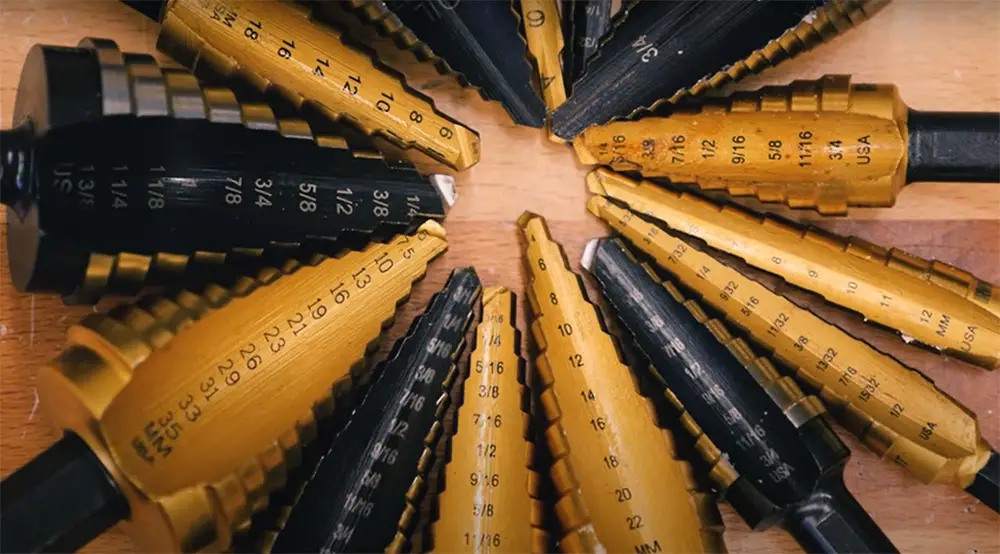
Clean
After drilling, it’s time to clean up the hole. If it is wide, you’ll need to use a chisel or file to correct it. Once it is the right size, use a brush or compressed air to eliminate any debris from the surface. Finally, apply any finishings, such as paint or stain, that are needed.
Using Step Drill Bits for the First Time
- Make a smaller-diameter pilot hole.
- Apply pressure evenly while drilling.
- Use lubricant (water or cutting oil) to reduce heat and friction.
- Do not force the drill bit.
- Start with a slow, constant speed and gradually increase as needed.
- When finished, reverse the direction of the drill to back the bit out of the hole.
Cutting holes in thin metal
For cutting holes through thin metal, a step drill bit is the most effective tool. Its conical shape and sharp teeth make it easy to cut through metal.
Cutting holes in plastic
Plastic is a little different from metal, in that it can melt as well as shatter. Keep in mind that too much heat might cause the material to deform.
What are the Advantages?
A step drill bit, unlike a conventional bit, creates diverse hole sizes.
Another advantage is that they can be used on surfaces that are not perfectly flat.
Finally, they are far more durable and may be used for more difficult projects.
What are the Disadvantages?
While they are excellent for a number of reasons, they do have a couple of potential downsides. First and foremost, they’re not the best choice for every situation. If you’re drilling too hard materials, or if you need to make a very precise hole, then you’ll probably be better off with a traditional drill bit.
Another potential downside is that they are more expensive.
They can be very sharp. Also, be sure to keep the bit clean and free of debris.
Single step drill bit or set of step drill bits
When you purchase this tool, you have the option of buying a single bit or a set. A set will usually include diverse sizes, while a single bit is just one size. A single bit may be all you need if only one instance of the bit is required. However, if you plan on using it more often, then it might be worth your while to invest in a set. That way, you’ll always have the right size on hand when you need it.
There are also two different types of flutes on them: straight and spiral. Straight fluted bits are good for drilling through softer materials. Spiral fluted bits are better for drilling through tougher materials like metal.
FAQ
What’s a step drill bit for?
A conical-shaped drill bit is a form of drill bit with numerous cutting surfaces that resembles a cone. The most frequent usage for it is to make screw holes in light fixtures or other things. You can also use it to enlarge an existing hole. Another common use is drilling pilot holes for deck screws. You’ll need to first create pilot holes before inserting the deck screws.
What is the advantage of a step drill bit?
The advantage of using is creating holes of various sizes without having to change bits.
Another advantage is that the steps act as cutting edges, so the hole will have a smooth finish. [4]
Is it possible to use a step drill bit in a hand drill?
Yes, you can use it in a hand drill, but it is not recommended. The reason being is that hand drills do not have the power to properly spin the bit and will likely cause the bit to break.
Additionally, it puts unnecessary strain on your wrist and forearm and can lead to fatigue. If you must use it in a hand drill, use slow, steady strokes and apply very little pressure.
Is it possible to use step drill bits on wood?
Yes, they can be used on wood. However, it is important to use the correct size and type of bit for the job. Using a too small bit creates a very large hole, while using a too large bit makes the hole too small. It is also important to use a sharp bit to avoid splintering the wood. [5]
When drilling into wood, it is important to go slowly at first and then increase the speed as needed. Drilling too quickly can cause the bit to overheat and damage the wood. It is also important to keep the drill steady while drilling to avoid creating an uneven hole. Finally, be sure to wear eye protection when using a drill.
Conclusion
That’s it! You now know how to use this tool like a pro. Just remember to take your time, use the right lubricant, and keep the bit cool, and you’ll be able to drill through anything. Thanks for reading! Happy drilling!
Useful Video: How to Use Step Drills – Kevin Caron
References:
- https://www.zoro.com/resourcehub/what-are-step-drill-bits/
- https://www.point2homes.com/news/tips-tricks/6-things-to-do-before-drilling-holes-in-your-walls.html
- https://www.hunker.com/12233587/how-to-use-step-drill-bits
- https://toolguyd.com/benefits-of-unibits-and-step-drill-bits/
- https://www.lowes.com/n/buying-guide/drill-bits-buying-guide











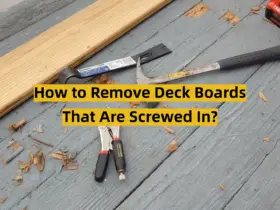
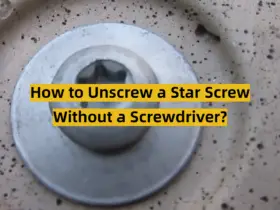
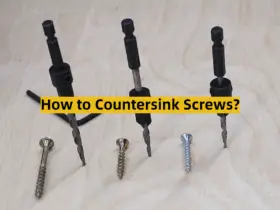
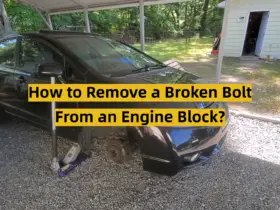
Leave a Reply